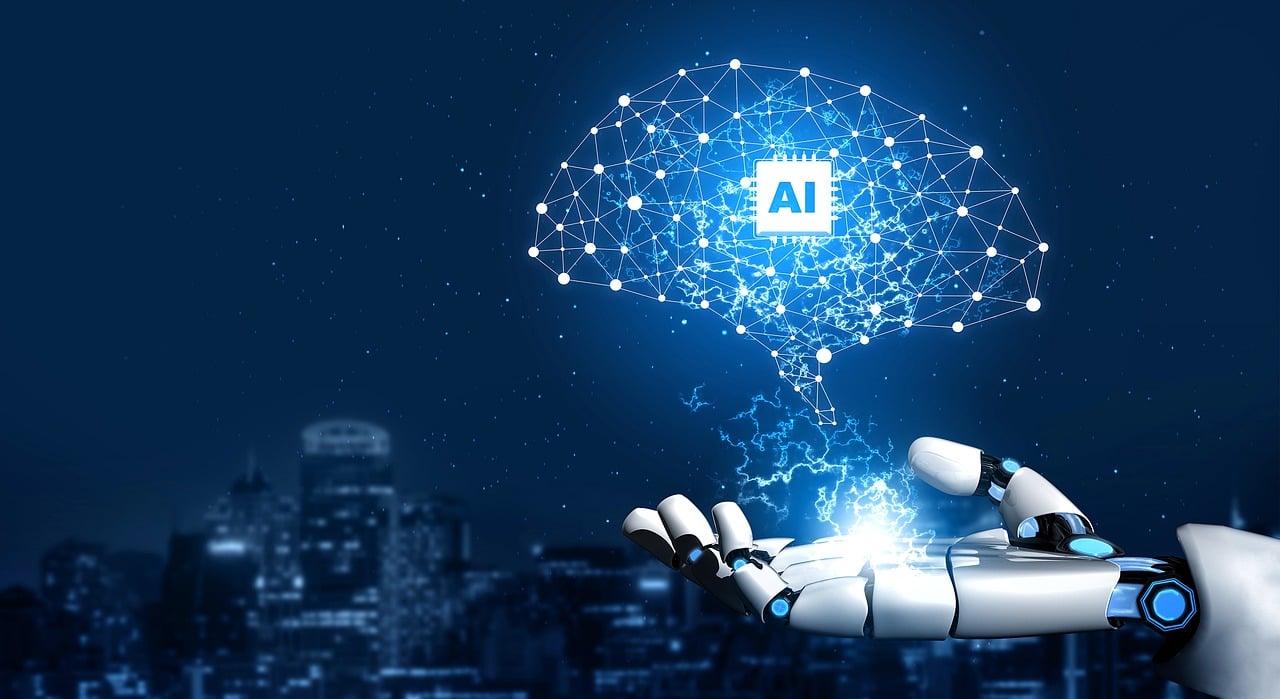Artificial Intelligence (AI) is a branch of computer science that focuses on creating intelligent machines capable of performing tasks that typically require human intelligence, such as learning, reasoning, and problem-solving. AI has evolved significantly over the years, with rapid advancements in machine learning, neural networks, and natural language processing. According to Statista, the global AI market is expected to reach $266.92 billion by 2027, reflecting the growing importance of AI across various industries. From healthcare and finance to manufacturing and retail, AI is transforming the way businesses operate, offering innovative solutions to complex challenges and driving productivity.
The Role of AI in Productivity
AI plays a pivotal role in enhancing productivity by automating repetitive tasks, analysing large datasets quickly, and providing actionable insights that can lead to more informed decision-making. A study by McKinsey found that AI has the potential to deliver additional economic output of around $13 trillion by 2030, making it a powerful tool for driving productivity and growth. By leveraging AI-powered solutions, businesses can streamline their operations, reduce costs, and increase efficiency. For instance, AI-driven automation tools can handle customer queries round-the-clock, freeing up human resources to focus on more strategic tasks, thereby boosting overall productivity.
Cost-effective AI Solutions
Open-source AI Tools
Open-source AI tools offer a cost-effective way for businesses to harness the power of AI without breaking the bank. Platforms like TensorFlow, PyTorch, and Scikit-learn provide businesses with access to cutting-edge AI algorithms that can be customised to suit specific business needs. According to a survey by O’Reilly, 58% of businesses are using open-source AI tools to some extent, highlighting their growing popularity and effectiveness. By leveraging open-source AI tools, businesses can experiment with AI algorithms, develop customised solutions, and drive innovation without incurring significant costs.
Cloud-based AI Services
Cloud-based AI services provide businesses with access to advanced AI capabilities without the need for significant upfront investment in hardware or software. Providers like Google Cloud AI, Amazon Web Services (AWS), and Microsoft Azure offer a range of AI services, including machine learning, natural language processing, and computer vision, that can be scaled according to business requirements. According to Gartner, the adoption of cloud-based AI services is expected to grow by 35% in 2022, underscoring their increasing relevance and value to businesses of all sizes. By leveraging cloud-based AI services, businesses can access cutting-edge AI technologies, scale their operations, and drive innovation without incurring hefty capital expenditures.
Implementing AI in Business Processes
Identifying Areas for AI Integration
Before implementing AI, it’s essential to identify areas within your business processes where AI can add value. Whether it’s automating customer service with chatbots, optimising supply chain management with predictive analytics, or enhancing marketing strategies with AI-driven insights, AI can transform various aspects of your business. According to a report by PwC, AI has the potential to increase global GDP by up to 14% by 2030, highlighting its transformative impact on various industries. By identifying opportunities for AI integration, businesses can unlock new avenues for growth, improve operational efficiency, and gain a competitive edge in the marketplace.
Training and Onboarding
Once you’ve identified the areas for AI integration, the next step is to train and onboard your team. Offering comprehensive training programs and workshops can help employees understand the benefits of AI, familiarise themselves with AI tools and technologies, and learn how to effectively integrate AI into their daily tasks. According to a study by Deloitte, companies that invest in employee training and development are 24% more likely to retain their employees and achieve higher levels of productivity. By investing in employee training and onboarding, businesses can ensure a smooth transition to AI-driven processes, foster a culture of continuous learning and innovation, and maximise the return on their AI investments.
Benefits of Using AI for Productivity
Time Savings
One of the most significant benefits of using AI for productivity is the time savings it offers. By automating repetitive tasks and streamlining processes, AI allows employees to focus on more complex and strategic activities, leading to increased productivity and job satisfaction. According to a survey by Salesforce, 71% of businesses that have implemented AI have reported a significant improvement in operational efficiency and productivity. By leveraging AI to automate mundane tasks, businesses can free up valuable time and resources, reduce operational costs, and accelerate business growth.
Improved Accuracy
AI algorithms are capable of analysing large datasets with incredible speed and accuracy, reducing the risk of human error. Whether it’s forecasting sales trends, detecting fraudulent transactions, or predicting equipment failures, AI can provide more reliable insights than traditional methods. According to a study by MIT Sloan, businesses that leverage AI for data analysis and decision-making are 30% more likely to achieve higher levels of accuracy and reliability. By harnessing the power of AI-driven analytics, businesses can make more informed decisions, mitigate risks, and seize new opportunities for growth and innovation.
Overcoming Challenges
Data Security
While AI offers numerous benefits, it also presents challenges, particularly around data security. Ensuring the privacy and security of sensitive information is crucial when implementing AI solutions. According to a report by Cybersecurity Ventures, the global cybersecurity market is expected to reach $345 billion by 2026, underscoring the growing importance of robust cybersecurity measures and compliance frameworks. By investing in advanced encryption technologies, multi-factor authentication, and regular security audits, businesses can protect their data, safeguard customer information, and maintain regulatory compliance.
Employee Resistance
Another challenge businesses may face when implementing AI is employee resistance. Some employees may be apprehensive about adopting new technologies or fear that AI will replace their jobs. To overcome this resistance, it’s essential to communicate transparently with employees, involve them in the decision-making process, and provide ongoing support and training. According to a survey by KPMG, companies that effectively manage change and provide adequate support to their employees during AI implementation are 50% more likely to achieve successful outcomes. By fostering a culture of openness, collaboration, and continuous learning, businesses can overcome employee resistance, drive adoption, and maximise the benefits of AI.
Future Trends in AI and Productivity
AI Advancements
As AI technologies continue to evolve, we can expect to see more advanced and sophisticated AI algorithms that can handle increasingly complex tasks. From natural language processing and image recognition to autonomous decision-making and robotics, the future of AI looks promising for businesses looking to enhance productivity. According to a report by IDC, worldwide spending on AI systems is expected to reach $110 billion by 2024, highlighting the growing investment and interest in AI technologies across various industries. By staying abreast of the latest AI advancements and innovations, businesses can stay ahead of the competition, adapt to changing market dynamics, and drive sustainable growth.
Integration with IoT and Automation
The integration of AI with Internet of Things (IoT) devices and automation technologies is another exciting trend to watch. By connecting AI-powered systems with smart devices and automated processes, businesses can create a more interconnected and efficient ecosystem that can adapt and respond to changes in real-time. According to a report by McKinsey, the integration of AI with IoT could generate up to $11.1 trillion in economic value by 2025, underscoring the immense potential of this synergistic relationship. By harnessing the power of AI-driven IoT solutions, businesses can improve operational efficiency, enhance customer experiences, and unlock new revenue streams.
Conclusion
In conclusion, AI offers tremendous potential for increasing productivity and streamlining processes across various industries. By leveraging cost-effective AI solutions, identifying opportunities for AI integration, and addressing challenges proactively, businesses can unlock new levels of efficiency, innovation, and competitiveness. Embracing AI is not just about adopting new technologies; it’s about embracing a new way of thinking and working that can drive sustainable growth and success. As AI continues to evolve and become more integrated into our daily lives and business operations, the opportunities for businesses to thrive and succeed in the digital age are limitless.
FAQs
- What is AI?
- AI, or Artificial Intelligence, is a branch of computer science that aims to create machines capable of performing tasks that typically require human intelligence, such as learning, reasoning, and problem-solving.
- How can AI benefit businesses?
- AI can benefit businesses by automating repetitive tasks, analysing large datasets quickly, providing insights for informed decision-making, and enhancing overall efficiency and productivity.
- Are there any cost-effective AI solutions available for businesses?
- Yes, businesses can leverage open-source AI tools and cloud-based AI services to access advanced AI capabilities without significant upfront investment.
- What challenges do businesses face when implementing AI?
- Some challenges businesses may face when implementing AI include data security concerns, employee resistance to new technologies, and the need for comprehensive training and onboarding.
- What are the future trends in AI and productivity?
- Future trends in AI and productivity include advancements in AI technologies, integration with IoT and automation, and the development of more sophisticated AI algorithms capable of handling increasingly complex tasks.




